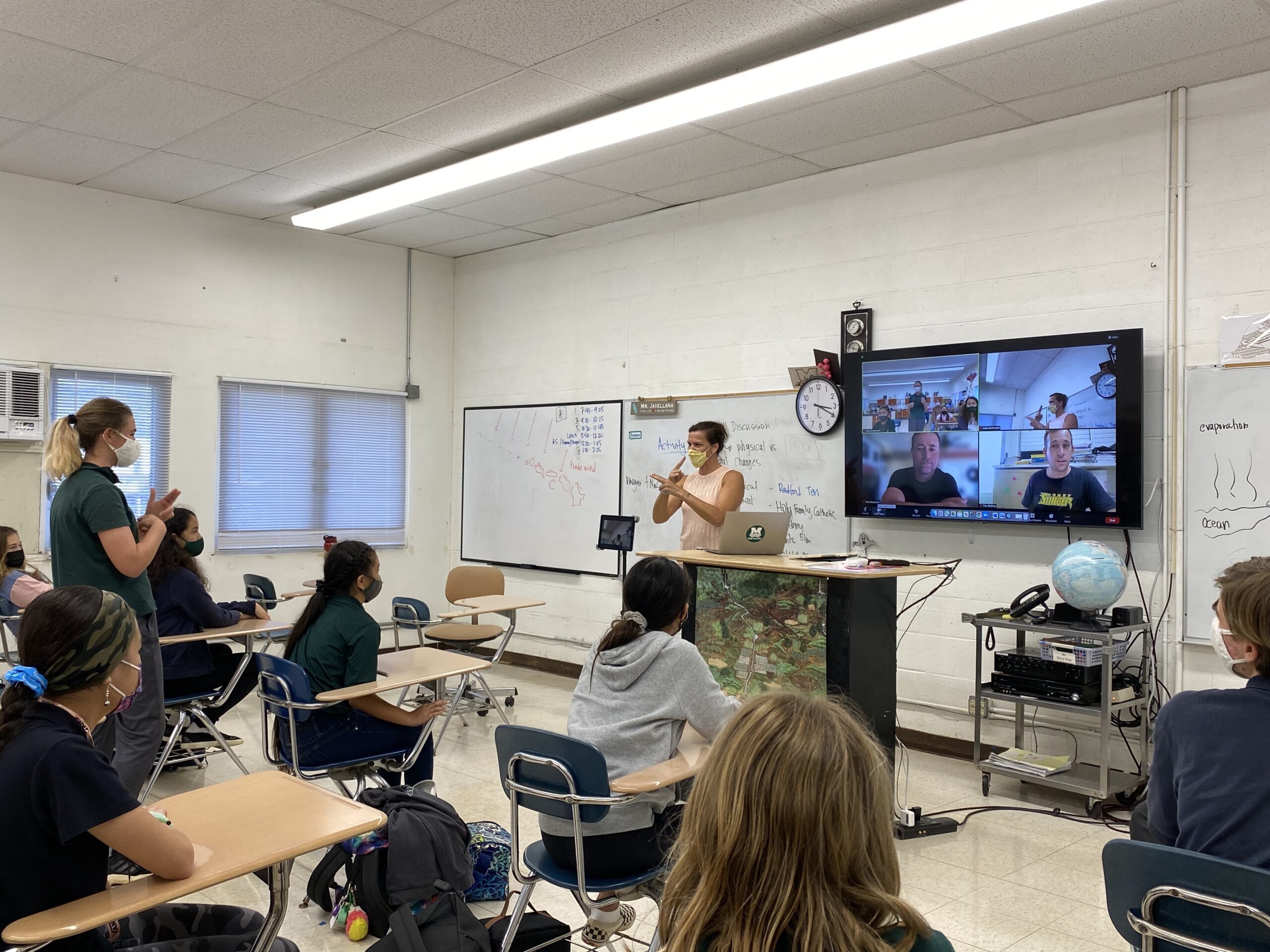At Mid-Pacific, two values of the Learner Profile are to “build social-emotional awareness and empathy in an interconnected world,” and to “nurture, sustain, and steward the environment and community in which we live.” This year, students in the Mid-Pacific Sign Language Club are doing just that.
Incoming Club President Kimi Yokoyama ’23, Incoming Vice President Maddie Ibara ’23 and other members will be assisting the school by providing written captions for videos posted to the Mid-Pacific YouTube page. The club’s goal is to support the deaf community by providing captions that are more accurate than the auto-generated captions seen on YouTube. In doing this, they hope to provide viewing opportunities that are more accessible to deaf viewers.
Sign Language Club members include students in grades 6-12 and total more than 50 participants, making the club one of the largest at Mid-Pacific. Each club meeting focuses on learning sign language vocabulary by a specific theme. The members have learned words used in school, words related to science, and words associated with holidays like Christmas.
“Learning sign language teaches our students to empathize with others because they start to understand – if they feel bad about being left out, imagine how deaf people feel when they are not able to understand what’s happening in a conversation without sign language,” shares Sign Language Club Faculty Advisor Kalei McDonnell.
“It’s important for our students to be able to understand the challenge that deaf kids have – kids their age who are going through life wondering how they will communicate in a hearing world,” she continues.

Mid-Pacific Sign Language Club members and Faculty Advisor Kalei McDonnell sign with teachers at the Hawaii School for the Deaf and Blind during a recent club meeting.
A large part of the Sign Language Club is advocating for accessibility here at Mid-Pacific and in the surrounding community, especially for the deaf and hard-of-hearing. The closed captioning work they are doing offers another way for club members to support the deaf community in addition to learning sign language.
Yokoyama first became interested in sign language after hearing about the Sign Language Club from a former club officer. “In the seventh grade, I started trying to learn sign language, but it’s really difficult to learn to sign when you’re just by yourself trying to memorize signs,” says Yokoyama. “You really have to have a community around you to learn it.”
The Sign Language Club provides the opportunity for students who are interested in learning sign language to learn and practice together.
“In Sign Language Club, it’s really cool to see everyone trying things out,” shares Yokoyama. “It’s such a beautiful language. There’s no other language like it because it’s very tactile and you can see people and you use facial expressions a lot so there’s a lot of nuance to it. It’s a whole culture and community that you have to start to understand.”
Ibara shares Yokoyama’s enthusiasm for sign language and the culture of the deaf community.
“For me, I’ve always been fascinated by languages in general. When it comes to sign language, I think it’s such an amazing way to communicate with other people and I think often times people don’t see how beautiful it is, how amazing it is to be able to interact with your hands and your facial expression,” says Ibara. “I think once you learn more about the culture as well, you’re just pulled into this beautiful world of sign language so that’s why I was really excited to join the club,” says Ibara.
Ibara is also part of a Diversity, Equity and Inclusion group at Mid-Pacific and she relates this experience to her participation with the Sign Language Club.
“When it comes to diversity, we always talk about how we live in a world where people are so different from each other and I think that being a part of this club has made me realize that we don’t just differ in what we like, but also in how we interact, and I think that the fact that we’re recognizing the deaf community and we’re acknowledging that their language and culture exists, makes me more motivated to keep learning about languages,” shares Ibara.
Yokoyama agrees.
“I learned that I need to treat deaf people as people who don’t have a disability because that’s not what sign language is,” she shares. “It’s not what being deaf is. It’s really just a different culture that I need to respect and take time to understand.”
The Sign Language Club meets once every week and is open to new members. Members will began adding captions to select Mid-Pacific YouTube videos starting with the 2021 Mid-Pacific Preschool and Elementary School Christmas program video.

